This site contains affiliate links. As an Amazon Associate, I earn a commission from qualifying purchases at no extra cost to you. Full Disclosure Here.
Camping is one of the greatest ways to experience the outdoors. There are endless places to go that feature some of the most wonderful views in the world that you can share with your friends, family, or experience all on your own.
Regardless of where you go, or who you go with, it is important to make sure you have everything you need before you travel to your campsite. You don’t want to be the guy or gal who loads their vehicle up with tons of cool gear only to arrive and realize you didn’t bring a tent. This is where a good checklist helps. We have provided a printable Marine Approved camping checklist below, so you don’t miss anything.
This guide is mostly geared towards campers who want to drive to their campsite. If taking to the trails and backpacking to your campsite is something you are interested in, be sure to also check out our backpacking checklist here.
You can view our Printable Camping Checklist PDF here.
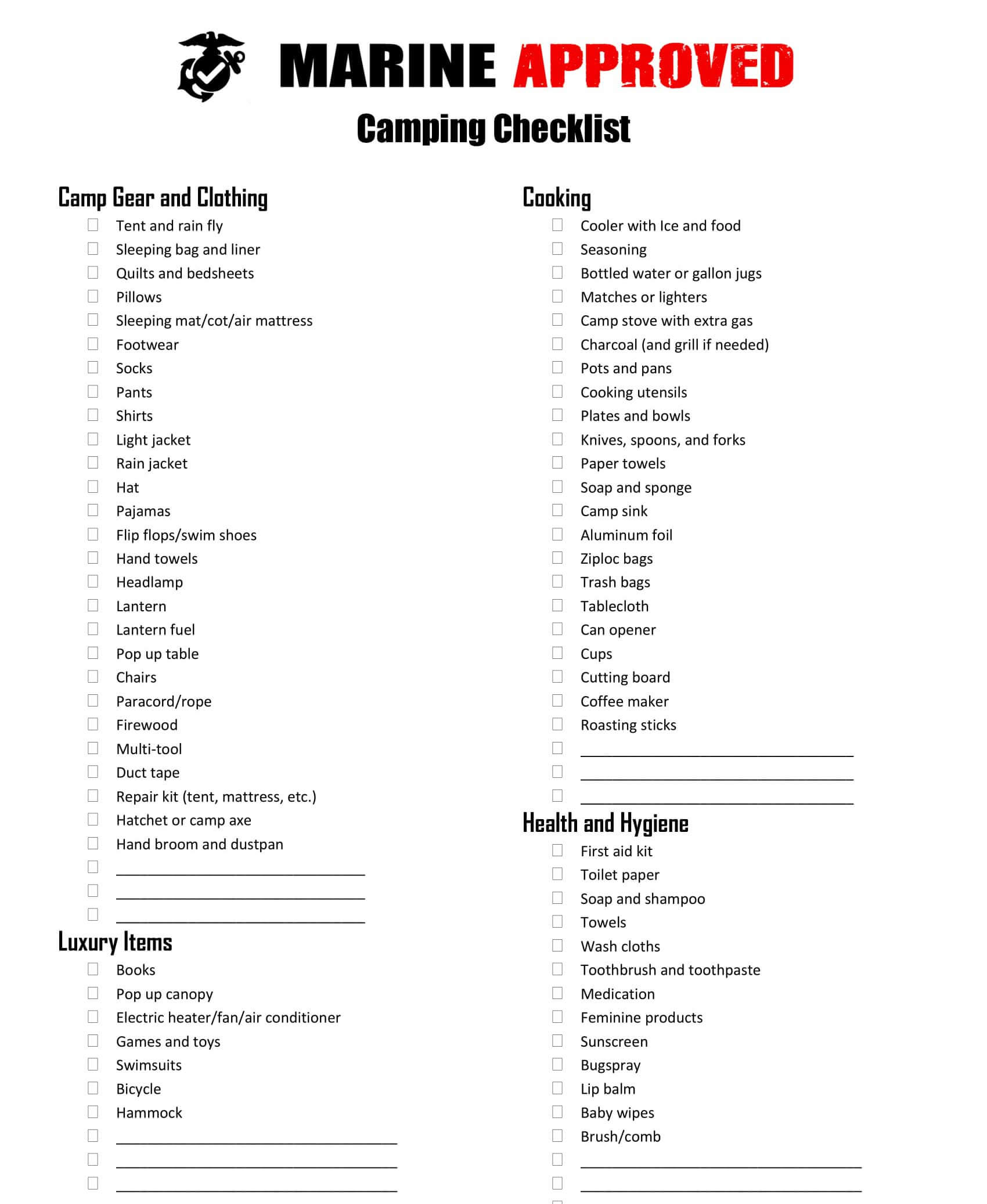
Here Are the Items on the Backpacking Checklist
Camp Gear and Clothing
- Tent and rain fly
- Sleeping bag and liner
- Quilts and bedsheets
- Pillows
- Sleeping mat/cot/air mattress
- Footwear
- Socks
- Pants
- Shirts
- Light jacket
- Rain jacket
- Hat
- Pajamas
- Flip flops/swim shoes
- Hand towels
- Headlamp and/or flashlight
- Lantern
- Lantern fuel
- Pop up table
- Chairs
- Paracord/rope
- Firewood
- Multi-tool
- Duct tape
- Repair kit (tent, mattress, etc.)
- Hatchet or camp axe
- Hand broom and dustpan
Cooking
- Cooler with food
- Seasoning
- Ice
- Bottled water
- Jugs of water
- Matches or lighters
- Camp stove
- Extra gas for your stove
- Charcoal
- Grill
- Pots
- Pans
- Cooking utensils
- Plates
- Bowls
- Camping knife
- Spoons
- Forks
- Paper towels
- Soap
- Camp sink
- Sponge
- Aluminum foil
- Ziploc bags
- Trash bags
- Tablecloth
- Bottle opener
- Can opener
- Cups
- Cutting board
- Coffee maker
- Roasting sticks
Health and hygiene
- First aid kit
- Toilet paper
- Shampoo
- Soap
- Towels
- Washcloths
- Toothbrush
- Toothpaste
- Medication
- Feminine products
- Sunscreen
- Bug spray
- Lip balm
- Baby wipes
- Brush/comb
Luxury items
- Pop up canopy
- Camping chairs
- Electric heater/fan/air conditioner
- Games and toys
- Swimsuits
- Spotlight
Other Important Considerations not on the Checklist
Timing Considerations
Getting the timing right can be critical for a number of reasons. Timing is usually less important for those who chose to go to the backcountry, but backcountry campers can still experience issues associated with bad timing.
The main concern we have in regard to timing is people traffic. Some people cringe at the mention of going to a popular campground on Memorial Day weekend. Memorial Day is considered the first big camping weekend of the year and thousands of people flock to popular campsites during holiday weekends like this. So, if you are looking for more of a quiet and private camping experience, you might want to consider a campground that is less popular or take it to the backcountry.
Sometimes the only choice to get in a good camping trip is to just “bite the bullet” and go to a crowded site anyway. If this is the case, always plan well ahead. Research your target campground and register for a specific campsite. Many campgrounds are first-come, first serve so try your best to get there as early as possible to snag the best spot. Believe me, you don’t want to drive 6 hours to find out there is no vacancy.
Keep in mind there will be much more noise at campgrounds during peak times. There will also probably be lines at the showers and bathrooms. When pre-selecting your campsite, try finding a plot on the outskirts of the campground. You might have to walk a little further to the bathroom but at least you won’t be surrounded by other campers.
When using the showers, try to go during non-peak hours which are usually first thing in the morning or right before most people decide to go to bed. You might not be able to avoid the lines or congestion so just keep in mind that a quick morning shower might not be so quick.
Lastly, when it comes to timing, try to plan accordingly for commute traffic. You don’t want to arrive at your campsite when it is dark. Not only will it make it more difficult to find your campsite, but nobody likes unpacking and setting up your gear when you can’t see. Especially when your family may be tired from the drive.
Weather Considerations
It is very easy to look at the forecast a week out and plan a camping trip when you think it will be nice. We all know how quickly weather can change so keep up with the forecast daily. If it looks like it will rain, don’t cancel your trip, just pack accordingly. Mostly what you need to be on the lookout for is inclement weather. If severe thunderstorms are in the forecast, you might need to re-evaluate. A weather radio or emergency radio can be an effective way to stay on top of the weather.
Wet conditions
Camping in the rain can actually be very enjoyable when you are properly prepared. Make sure your tent is in good condition to be used in a wet environment. Packing an all-weather pop-up canopy is also a must-have when it is rainy. This will keep you from spending all day in the tent as well as allowing you to cook and eat your food without water spoiling everything.
Pack waterproof jackets and pants to keep from getting wet. It is also a good idea to take a non-cotton shirt, pants, and socks. Cotton is not your friend when it is wet.
Winter conditions
Playing in the snow is undeniably a whole lot of fun. Especially for children (and adults who act like children), who don’t get to experience snow that often. Camping when it is cold and snowy can also be a wonderful experience when properly prepared. Whenever you go into a more extreme environment to camp, you will need to do a little more research as well as make camping gear purchases specifically for the weather you intend to camp in. Taking inadequate gear for cold weather camping can be miserable.
As stated previously, most tents can handle mild winters but if you plan on getting a good bit of snow or encountering very low temperatures, try investing in a tent better suited for colder camping. These types of tents will have different types of designs for ventilation that allow you to keep more heat in and allow for moisture to escape.
Just as important as having the right tent for cold weather is having the right sleeping bag and sleeping pad. Sleeping on the ground when it is cold, we result in your body heat being rapidly lost to the ground no matter how good your bag is. Make sure you have a good isothermal mat to lay down on if you don’t have a cot or air mattress.
Speaking of air mattresses, they are risky business when it is cold. If the mattress loses air overnight, you will find yourself freezing on the ground. A cot or a mat won’t leak down and are both more reliable choices for cold weather.
Having extra blankets and quilts are nice to have but a properly temperature rated sleeping bag will be better at keeping you warm. When it is freezing at night, keeping the cold air out of your bed is the number one thing to be concerned with. You can have a stack of blankets a mile high but as soon as you move, all the cold air is going to get sucked under the sheets. Good sleeping bags stay tight around your head, so you don’t lose the precious warm air.
Tent heaters are a good investment as well. When looking for one, make sure they are safe to be used in enclosed spaces. If you decide to take a tent heater, just make sure to pack like you aren’t taking one so you will be properly equipped if it were to break.
Summer Conditions
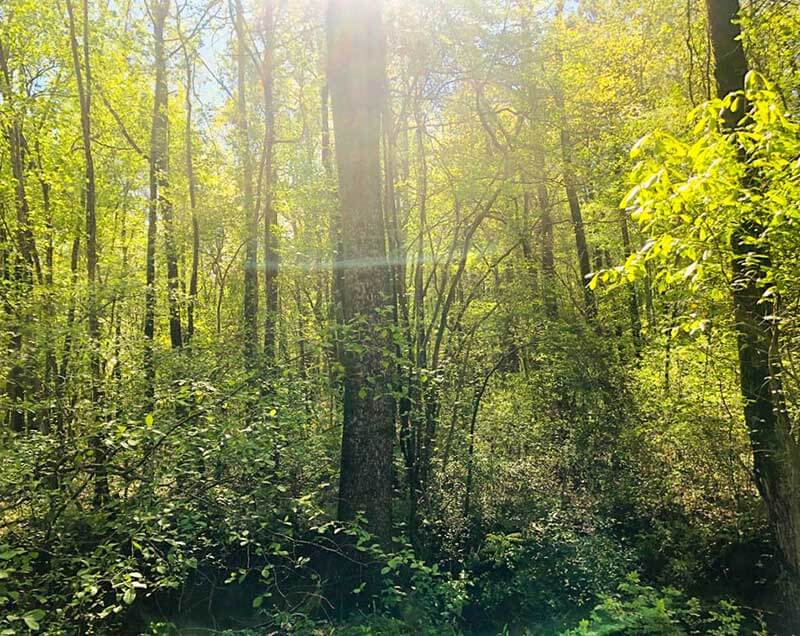
Camping in the southern United States during the middle of summer means high heat and high humidity during the day and at night. If the heat weren’t enough, there are also tons of biting insects to fend off (well get to this later).
Bring enough water. Take plenty of water even if the campground is supposed to have water available. Take several cases of bottled water as well as some gallon jugs. Remember, you won’t just be drinking the water, you will need water for washing as well.
Try your best to camp in an area that has plenty of shade but beware of dead branches if you are under a tree. If you don’t want to take a pop-up canopy, you can use some parachute cord to tie up your tents rainfly to provide some shade.
When the sun goes down and it is still 85 degrees F, a fan can provide a little comfort until you adjust to the heat. I’ve found that it takes me about 2 days to fully adjust to hot and humid nights in a tent. For someone going for a weekend trip, this is too long to adjust. Since most campsites have electrical outlets, a fan is a good idea.
There are so many different types of tents on the market that you can find something that will work for you no matter how you intend to use it. If you know you will mostly be camping in the warm months, opt for a tent with plenty of ventilation. There are plenty of tents out there that are almost all mesh. Just don’t forget the rain fly if you take a tent like this.
Bear Country
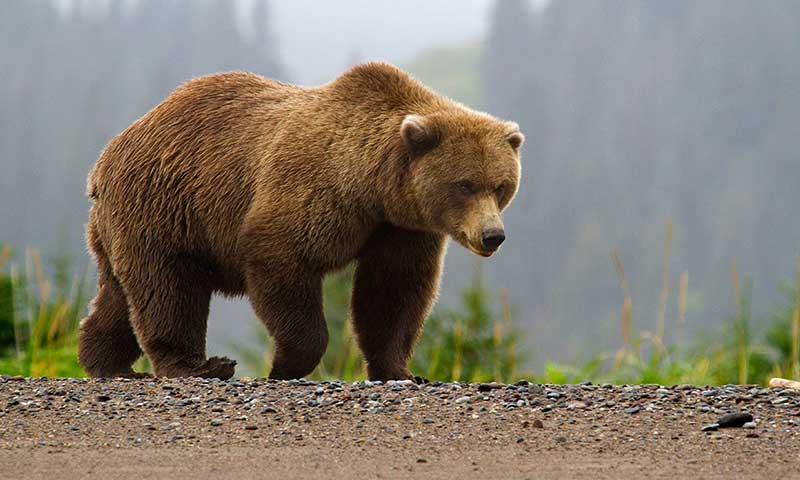
When camping in bear country, there are several rules to follow that will keep you safe. While bears are very beautiful creatures, they can quickly turn vicious if not respected. It is best to avoid bears when hiking and you definitely don’t want them coming into your camp.
Food habits have to be strictly controlled no matter what type of campsite you chose. Bears have been known to infiltrate large campgrounds and steal food especially in areas where the bears are used to a human presence.
Never leave food out in the open. If in the backcountry, make sure to cook and eat at least 100 feet away from your sleep area. Err on the side of caution and go further when possible. Make sure to store your food and anything else that has a scent in a “bear box” and keep it more than 100 feet from your campsite.
Always wash your hands and keep the smells around your campsite as sterile as possible. Wear scentless deodorant, use scentless soap, use scentless sunblock, etc. Also, have a cooking/eating outfit that you can change out of and store away from your camp. There isn’t much of a point in hiding your food when all your clothing smells like your last meal.
When camping in a designated campground, you will have to follow campsite rules pertaining to food and trash storage. Campgrounds in bear country always have a place to dispose of trash, like in a bear-proof bin. Never leave any trash bags out in the open.
It is always a good idea to keep a can of bear mace handy as well.
Think About Activities
When packing your gear don’t forget to consider the types of activities you can enjoy in or around your campsite. Do your research ahead of time and plan accordingly. The last thing you want to do is show up with only camping gear and realizing there is a great running trail, place to fish, mountain bike trail, etc.
Many campgrounds have great places to hike, bike, swim, boat, and fish. Some places even have daily scuba diving trips. Some campsites have incredible views, so you might want to bring a spotting scope or some binoculars.
What to Pack
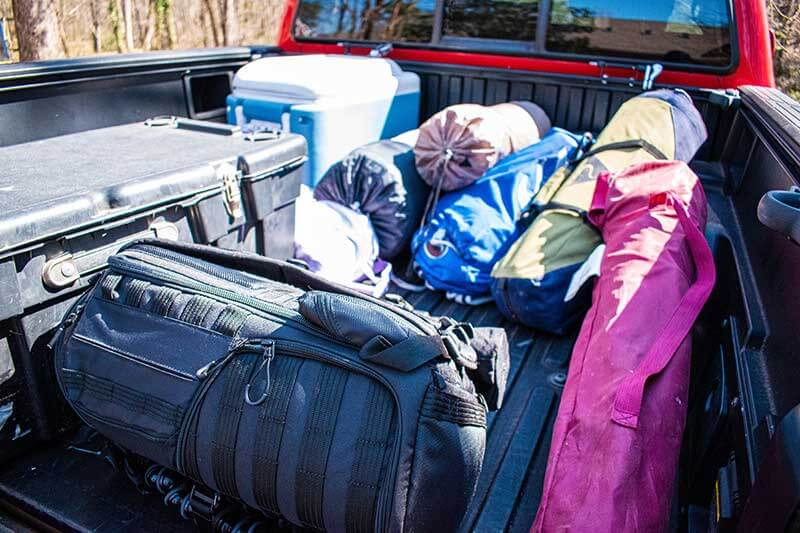
The greatest thing about front-country/car camping is that you can pretty much take all the gear you can fit in your vehicle. As opposed to backpacking, using your vehicle to transport everything not only is physically easier but allows you to camp for long durations with all the creature comforts you desire. If you wanted to go all-out, you can take a small air conditioning unit and television. Just try putting a 48-inch HDTV in a backpack.
Packing goes a lot easier when you lump your items into categories and pack one category at a time. If you don’t pack everything this way, you risk becoming distracted and leaving something off the list. Or, it will just take forever to get everything.
Camp Gear and Clothing
Nobody wants to go for a nice family camping trip and have a horrible experience sleeping. Making sure you have everything on this portion of the list is a good idea. Food and water can be bought locally but critical camping items can be difficult or impossible to find if you forget them.
Tent
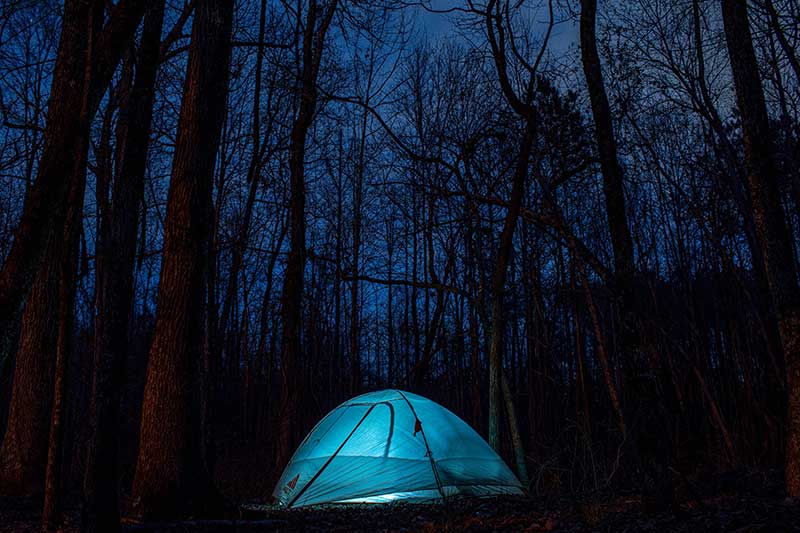
When backpacking in the backcountry, weight is a huge factor when it comes to selecting the right tent for the job. We don’t have to worry about weight when car camping so you can go crazy and take the most luxurious tent on the market. Be sure to take into account the seasonal rating for the tent.
Most tents can be used all-year-round if camping in milder climates but keep in mind the climate where you will be camping when making your tent selection. If you will be taking most of your trips in the middle of summer in the southern United States, take a tent with very good ventilation.
Sleeping Bags and Blankets
Sleeping bags have come a long way in the last couple of decades. There are many types to choose from. When selecting a sleeping bag, make sure you get one rated for the coldest temperature you will experience during the camping season. During the summer, I like to take a lighter bag and a sleeping bag liner. The liner is very thin so you can cover up with it until late at night. When it gets cooler later in the night you can just zip up your sleeping bag around you.
If you aren’t a fan of sleeping bags or just don’t want to buy one, just take some quilts and regular bed sheets. When I take my family camping, this is the method we use most often. It makes it very easy to control your body temperature as well as sprawl out in the tent without being constricted within the confines of a bag.
Sleeping Mats and Cots
No matter what sleeping bag you have or what fluffy blankets you bring, sleeping directly on the ground will not be fun. Do yourself a favor and at the very least purchase a foam sleeping mat. If you want to take it up a notch, just take an air mattress.
Packing an air mattress is almost cheating when it comes to camping but hey, nobody will judge you. The combination of air mattresses, bedsheets, quilts, and pillows will feel almost as good as sleeping in your bed at home. Just don’t forget the air pump.
Air mattresses are kind of bulky and some people can’t stand sleeping on them. If you fall into this category, then buy a good camping cot. Sleeping cots are great because they keep you off the ground, are very comfortable, and you can use the space underneath them for storage.
Clothing
Take clothing that is appropriate for the weather you will experience. Also, take clothing for weather you are less likely to experience. Even if the forecast says clear and sunny, you shouldn’t ever trust it when camping.
Having the right clothing isn’t as important as it is when backpacking but you still want to be comfortable. Try wearing clothes made of synthetic material during the day. At night change into something more comfortable.
Also, be sure to take the right footwear. Always include some kind of water shoe or flip flop for wearing to the shower.
Camp Gear
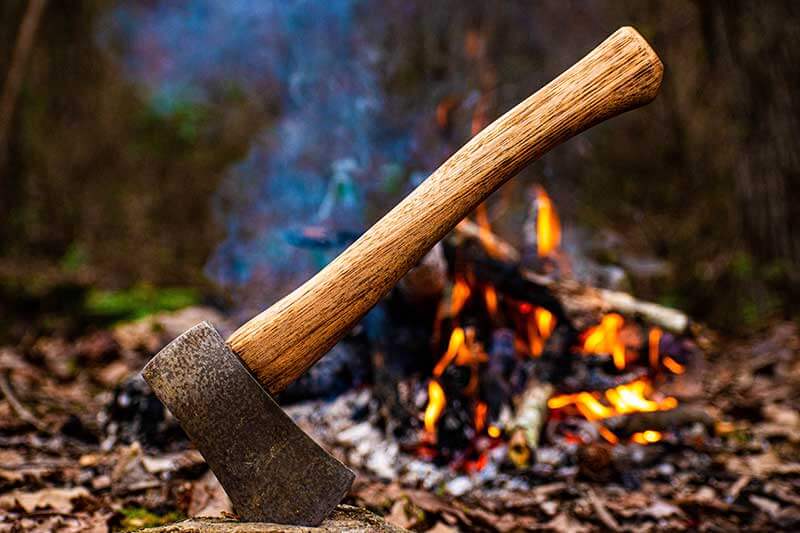
Camping just wouldn’t be camping without fire. When selecting your campsite, make sure they allow fires. Believe it or not, some campgrounds ban campfires. If you plan on building a fire, invest in a good hatchet. An axe or camping hatchet will come in handy often, whether you need to split some kindling, hammer tent stakes, or clear away brush, a hatchet is a tool that should last a lifetime and be taken on every camping trip. A “camping knife” or fixed blade knife can also come in handy when making fires. You can check out our favorite fire starters here.
One of the most important things we take for granted is light. Especially when you forget a lantern or flashlight. Headlamps are great for showing you the way but also make sure you take a couple of lanterns. Lighting a large area with a single lantern is much better than everyone inadvertently shining headlamps in each other’s face.
Chairs and pop up tables are a must-have. Otherwise, you are going to be sitting on the ground. Most campgrounds have picnic tables on each lot, but you want a chair you can move around. Especially when there is a beautiful river nearby where you might want to go enjoy lunch or fish.
Things usually don’t go to plan when camping so it is always a good idea to take some tools. Multi-tools, tape, cordage, hatchets, and repair kits are some things you will be glad you packed.
Storage is another thing to consider. Once you are unpacked, you want to be organized. Believe me, you don’t want to have to rummage through 15 bags to find the paper towels when your kid spills syrup all over the place. Take several storage trunks, preferably with wheels and a place to hang a padlock.
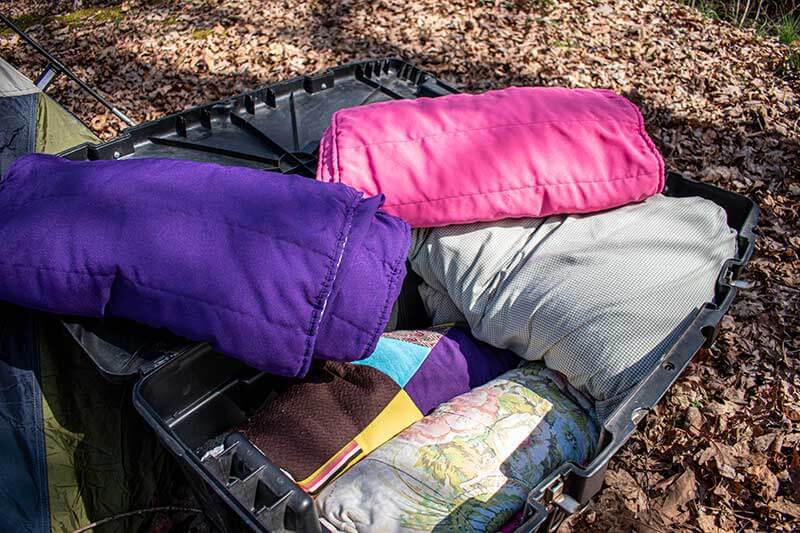
Storage trunks are great for stowing everything you don’t want lying around all day. We always roll all our bedding up and put them in a box. A good practice is to have several of these boxes; one for bedding, one for kitchen items, and one for clothing. When closed, these trunks double as benches and tables.
Health and Hygiene
Forgetting the toilet paper isn’t as terrifying for car camping as it is for backpacking, but you still want to make sure you have everything bathroom-related in your possession. Sometimes, busy campgrounds can run out of toilet paper, paper towels, and soap. It is in your best interest to plan for outages.
Luxury Items
Really all you need to have a good time camping is a tent, sleeping bag, food, and water. Let’s face it though, we want to have a great time camping! Items in this category should be the things you wouldn’t miss if someone accidentally left them by the front door instead of putting them in the vehicle.
How Much Water to Bring
Judging how much food and water to take with you will always be one of the hardest things to get right. Rarely will you ever take just enough. In most cases, you will have too little or too much. When it comes to water, always take more than enough for everyone who is going to be camping. Running out of food isn’t a big deal. Running out of water can become a serious situation. Even if the campsite advertises that it has drinking water on-site, you can’t always depend on water being there. So, how much water should you bring?
Experts say an average person is supposed to drink an 8-ounce glass of water 8 times a day. So, one glass of water for each hour most people are at work. When being active outside there will be a greater need, especially if the weather is hot and humid. Adjust accordingly.
There is no hard and fast rule but for me, when camping in the Alabama summer, I try to take 8 16-ounce bottles per day for each adult. Kids drink less water the younger they are. For kids from 5-10 years old, 6 bottles should be fine. Children under 5 will probably be ok with 4 bottles.
Gallon jugs and 2.5-gallon jugs are great to have for washing hands and filling a tub for dishwashing. Take jugs instead of extra bottles so you can easily separate your water usage. If you just have a ton of water bottles you might cut into someone’s drinking water when you wash mud off your shoe or hiking boots.
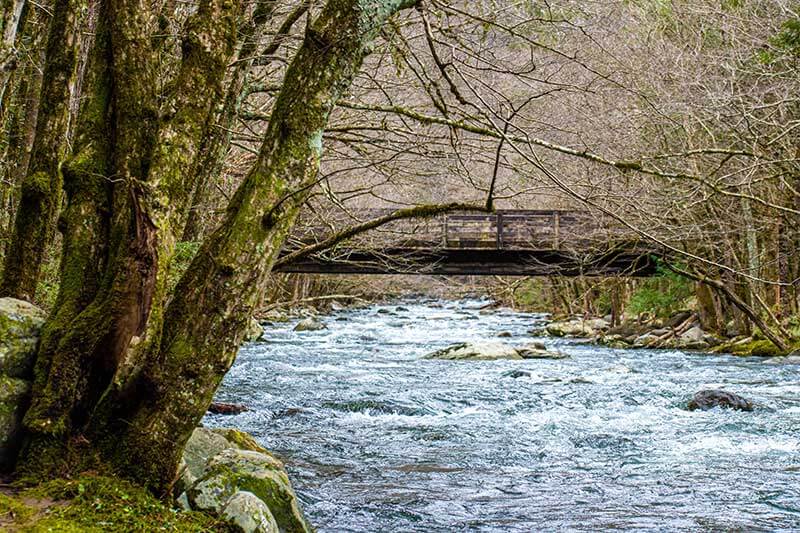
Sometimes it is just not feasible to take tons of water. When that’s the case, a good water filter can be your best friend. There are all types of water filters for camping out there, so you don’t have to stress over options. If your campsite is near a stream or lake, all you need is a good filter to provide water for your party. If you decide not to bring water and depend solely on a water filter, bring two in case one fails.
Water filters for camping are designed to be placed in the water source and pumped. The pumping action will pull water through the filter into a bag or bottle. There are well-priced filters on the market that will remove 99.99% of bacteria, parasites, and viruses in water and allow you to filter up to 100,000 gallons. We actually have an entire page on camping water filters here that you can check out.
Cooking
Another great perk of car camping is what food you can bring along. Pack whatever you want that doesn’t have to microwaved or cooked in an oven. There are a lot of foods marketed as camping foods because they’re easy to cook while camping and taste pretty good. Much better than the MREs we ate in the Marines.
If you plan on grilling any, make sure your campsite has a grill or you will need to bring your own. For meals that need to be cooked in a skillet, invest in a good camp stove. Pack pots, pans, cooking utensils, plates, and eating utensils.
Make sure you have a good cooler that will keep ice for a long time. Check with the campground and see if they have an ice machine. If they do have an ice machine, make sure it is in working order. Most of the time, there are gas stations close by where you can fill up on ice if necessary. In the case that none of these options are available, make sure you have a really good cooler and then freeze all the food you can.

Vegetables
Vegetables are a staple for camping. I’m talking potatoes, chickpeas, corn, beans, cabbage, peppers, onions, tomatoes (yeah, yeah, it’s a fruit), and the list goes on. There are many vegetables that you can get fresh that will last many days without refrigeration. It’s a very good idea to pack all the food you can that doesn’t require cold to keep from spoiling.
When it comes to veggies, try pre prepping everything and storing in a Ziploc bag so you don’t have to spend a ton of time chopping potatoes or carrots.
Fruits
Follow the same rules as with the vegetables. Try to get fruits that don’t require refrigeration. Grapes, oranges, bananas, peaches, etc.
Meat
The meat is really what the cooler is for, but it is good to have a protein source that doesn’t require it. Make sure to pack some canned meat like tuna and chicken. A good supply of jerky is also a good idea. Meats like summer sausage can be kept unrefrigerated until open so add that to your list.
If you can’t live without eggs, try to find someone local who has their own chicken coop. Fresh eggs do not need to be refrigerated for a while. If the eggs are fresh laid and haven’t been cleaned, they will last up to a month without needing to be cooked. Store bought eggs need to stay in the cooler.
Where to Go?
Knowing where to go is obviously the most important step in planning. Not many people pack everything up and start driving until they find a place to go but only knowing your destination sometimes is not enough. There are several considerations to take depending on where or when you decide to go.
Front Country or Backcountry?
Front Country
The term front country usually applies to campsites located in campgrounds. Campers can drive up directly to their “lot”. Most front country campgrounds have designated tent pads, fire pits, grilling areas, and picnic tables. You give up a lot of control over the campsite layout, but you have just about all the amenities you could want when camping. This type of camping is perfect for beginner campers, families with small children, and campers who just want a quick trip that requires less planning than backcountry camping.
The best thing about camping in a campground is the amenities. Your campsite is pre-prepared and laid out with grill, table, fire pit, and tent plot. Most of the time, each site has its own electrical power box where you can plug in just about anything you want. Usually, there are restrooms and showers only a short walk away. Some campgrounds even have little stores where you can purchase food and gear.
Backcountry
While most people consider true backcountry camping as backpacking for a day and camping somewhere completely remote for the night, we are going to use the term to describe driving through the wilderness to a remote location. This type of camping is often referred to as dispersed camping or primitive camping, but it really just comes down to what your naming preference is.
Backcountry camping is the ultimate way to camp if you want solitude and a peaceful experience. There are many places in the United States where you can partake in this type of activity. You can find places to do this type of camping outside of a national park, but this method requires more research into who owns the property and how to get there. For this type of camping, always have a handheld GPS and Compass on you.
Many federal agencies manage land that offers backcountry/dispersed camping. They usually have designated areas for this type of camping, and they are accessed via unimproved service roads. In most cases, you need a vehicle with off-road capabilities to get there. Always make sure you check ahead of time for the park’s rules and regulations for camping as they may be different depending on who manages the land.
Backyard
There is a very good chance that you own or know someone who owns a bit of property. This is one of the greatest ways to experience camping without having to pay a fee or abide by park regulations. If you or your loved ones who are camping with you are first timers, backyard camping is a great way to get some experience and allow expectations to be made in a more controlled environment.
Camping with kids or people who have never been in the woods before can end up being pretty darn miserable for all involved. Being able to camp only steps or a quick drive from your home gives makes it very easy to control the situation. If you forget something, you can quickly go get it. If someone is having a really bad time, they can walk home without having everyone else pack up and cancel a trip.
Perhaps the greatest benefit of camping in your backyard is fleshing out the details of your camping list when forgetting something has almost no consequence. If you have a big trip planned, try to do a quick backyard camp before you go. There will almost always be something you miss and will want to add to your list before you go next time.
Knowing Who Owns the Land
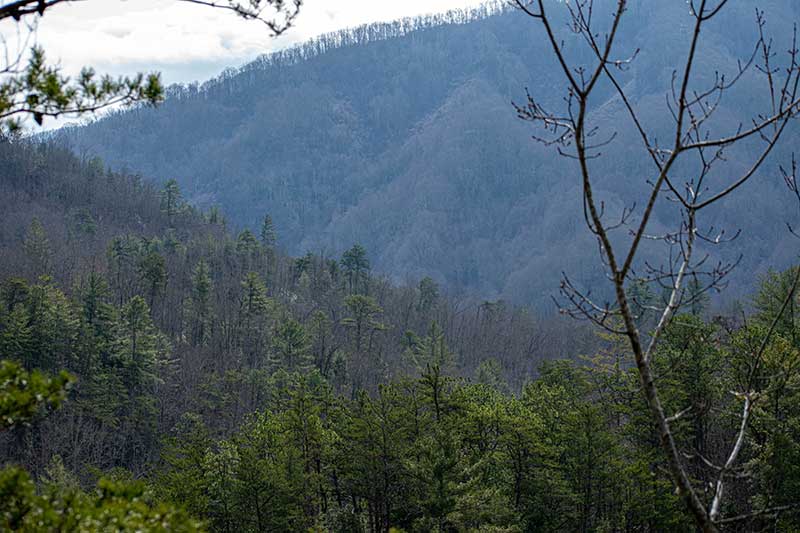
Everyone should know that popping up a tent wherever you want could get you in some trouble. Inadvertently setting camp in someone’s backyard or in a restricted area is surely something that needs to be avoided. If you have camped quite a bit locally but are deciding to go somewhere further away, you might have to abide by a completely different set of rules. It pays to understand who owns the land.
In the US, there are hundreds of million acres of public land that is owned by the government. Most of this land is controlled by 4 main federal agencies: The Bureau of Land Management (BLM), the U.S. Forest Service (USFS), the U.S. Fish and Wildlife Service (USFWS), and the National Park Service (NPS).
Each agency has its own way of taking care of the land which results in different policies for those who want to use the land. Knowing who manages the land will make it easier to camp at different sites while still being compliant with their policies.
Bureau of Land Management (BLM)
The BLM was established in 1946 by President Truman and manages 244 million acres of federal land. Most BLM land is located in the western part of the United States in the following states: Alaska, Arizona, California, Colorado, Idaho, Montana, Nevada, New Mexico, Oregon, Utah, Washington, and Wyoming. If you are camping somewhere out west, there is a good chance you are on BLM land.
U.S. Forest Service (USFS)
The U.S. Forest Service was established in 1905 and takes care of 154 national forests and 20 national grasslands. They manage 193 acres of land. The USFS was initially created in order to manage Yellowstone and a few other parks but has since expanded.
The land managed by the USFS is split into regions 9 regions and numbered from 1-10. The 7th region was eliminated but they kept the numbering convention the same. Here is the breakout of states included in each region, note that the regions aren’t dependent on state lines:
Region 1 (Northern Region): Montana, Northern Idaho, North Dakota, Northwestern South Dakota, Northeast Washington, and Northwest Wyoming.
Region 2 (Rocky Mountain): Colorado, Nebraska, Kansas, Wyoming, and South Dakota.
Region 3 (Southwestern): New Mexico and Arizona.
Region 4 (Intermountain): Southern Idaho, Nevada, Utah, and Western Wyoming.
Region 5 (Pacific Southwest): California and Hawaii.
Region 6 (Pacific Northwest): Washington and Oregon.
Region 8 (Southern): Alabama, Arkansas, Florida, Georgia, Kentucky, Louisiana, Mississippi, North and South Carolina, Tennessee, Texas, Oklahoma, and Virginia.
Region 9 (Eastern): Maine, Illinois, Ohio, Michigan, Wisconsin, Minnesota, Iowa, Missouri, Indiana, Pennsylvania, West Virginia, Maryland, New York, Connecticut, Rhode Island, Massachusetts, Vermont, New Hampshire, Delaware, and New Jersey.
Region 10 (Alaska): Only Alaska.
If you know what region you belong to you can get detailed information on recreation from the specific area you plan on camping.
U.S. Fish and Wildlife Service (USFWS)
The USFWS manages over 150 million acres of land. There are many areas the USFWS will allow you to camp but they are more concerned with wildlife conservation. Their main function is enforcing federal wildlife laws, protecting endangered species and habitats.
The National Park Service (NPS)
The NPS manages about 84 million acres all of which are national parks, national monuments, and historical properties. The main functions of the NPS are preserving the ecological and historical integrity of all that it manages while making these places available for public access.
Camping in an area controlled by the NPS is very easy. If you visit their website, you can search all of their parks and find all the information you desire. You can target a specific place and their website will walk you through the whole planning process and even help you make reservations.
Wrapping Up
Front country camping is one of the best ways to experience camping. The ability to take pretty much anything you want with you to the campsite can make your camping experience extremely enjoyable.
Taking tons of gear can be great but it can also cause you to forget some of the items that are more critical to camping. Following a checklist is a good way to avoid missing something. Be sure to print the Marine Approved Camping checklist and mark off items as you pack. Happy camping!

